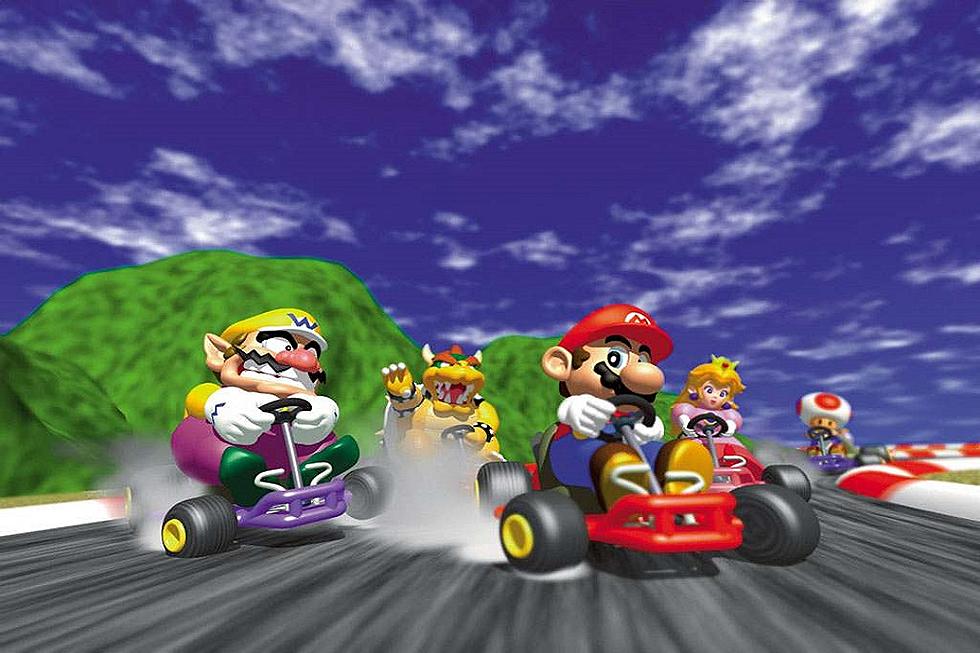
The Greatest Generation: The Nintendo Entertainment System Turns 30
Thirty years ago, Nintendo released the Western version of its Family Computer/Famicom system in North America, and the NES would go on to lead the 8-bit generation of console gaming during the late '80s and early '90s.
The Nintendo Entertainment System didn't launch until October 1985, which is when it made its big North American debut. Throughout July 2013, many news sites out there were running stories about how the NES was turning 30. Unfortunately, they were wrong. The Nintendo Family Computer, better known as the Famicom, was the system that turned 30 during that time. The Famicom's Western counterpart is the Nintendo Entertainment System. Even though they pretty much played the same library of games, the two consoles were quite different.
While the Famicom launched in Japan in mid-July 1983, Nintendo didn't send the red and white console overseas right away, despite originally having plans to do so. During the first year of release, early versions of the Famicom were found to have faulty chips in them, resulting in a massive recall. Nintendo replaced the systems with new ones having upgraded motherboards. This likely played a factor into why Nintendo wanted to change the overall Famicom design before shipping it overseas to the West.
Atari was sought out by Nintendo to release the rebuilt Famicom as the Nintendo Advanced Video Gaming System. This was mainly due to the success Atari had in North America throughout the late 1970s and early 1980s with the Atari Video Computer System, which was later renamed the Atari 2600 upon the release of the Atari 5200. Nintendo was supposed to have finalized and signed its deal with Atari at the 1983 Consumer Electronics Show.
Unfortuantely, Atari found out that its main competitor at the time, Coleco, was demoing the Coleco Adam gaming computer at the event with a port of Nintendo's Donkey Kong, which breached Atari's early exclusivity deal with Nintendo. Long story short, Atari ultimately decided not to release Nintendo's Advanced Video Gaming System, CEO Ray Kassar had to resign over accusations of illegal insider trading later that year and the entire Nintendo/Atari deal went kaput upon Kassar's departure from the company. Just imagine how different the scene would've been if the Atari released the Nintendo Advanced Gaming System.
Nintendo then planned on redesigning the Famicom for its North America release as the Nintendo Advanced Video System, which featured a wireless joystick, two wireless controllers, a cassette data recorder, a keyboard and a BASIC cartridge system. Data cassettes were starting to become trendy for home gaming computers like the MSX, ZX Spectrum, Commodore 64 and Amstrad CPC before floppy disks started becoming the computerized standard. The video game market crash of 1983 likely played a huge influence in Nintendo abandoning its AVS. Fortunately, Nintendo decided to scrap the project and revert back to the Famicom's cartridge-based system.
Two years after the Atari/Coleco/Donkey Kong fiasco, Nintendo unveiled its North American version of the Famicom at the 1985 Consumer Electronics Show. The console demoed at this event was the physical NES system as we know it today. Unfortunately, Nintendo didn't have a name for it yet. The company decided to not copy the other home consoles on the market, but to establish itself as its own unparalleled brand of entertainment.
In order to standout from the multitude of failed consoles that contributed to the 1983 video game market crash, Nintendo decided to take things seriously. They called this new console the Nintendo "Entertainment System" as opposed to a video game system. The cartridges were called Game Paks and the system itself was called a Control Deck. The NES was then released in various forms for its North American debut in 1985. The Deluxe Set included the NES Control Deck, two controllers, the Zapper light gun and the Robotic Operating Buddy, better known as R.O.B. The Deluxe Set (priced at $199.99 which would've cost over $475 based on modern inflation) also came with the Duck Hunt and Gyromite Game Paks. R.O.B. was a bit of a novelty, and the robot's actual functionality with Gyromite was shaky at best, resulting in Nintendo dropping the robot from its future NES sets. Nintendo also released a basic NES set in 1985, which featured the Control Deck, a single controller and Super Mario Bros. for $99.99 (which is roughly equivalent to $221 after modern inflation).
To say the Nintendo Entertainment System was successful would be an understatement. Within three years, the NES video game market grew larger than all home computer software combined. After five years, one out of every three American households owned an NES. Sega offered decent competition in the form of the Sega Master System. The end of the '80s saw the dawn of the Sega Mega Drive, which is best known as the Sega Genesis. Nintendo retorted with the Super Famicom in 1990, which would be slightly redesigned for North America as the Super Nintendo Entertainment System, properly kicking off the console war between Sega and Nintendo for video game supremacy throughout the first half of the '90s.
The Wii U is trekking far behind Microsoft's Xbox One and Sony's PlayStation 4, but who knows what the future will bring. History proves that we should never count Nintendo out, especially when it's being eclipsed by other companies on the market, and there's always a chance it could bounce back to definitively change the video game scene one more time.
More From Arcade Sushi
![Mario Is a Man of Many Hats in Super Mario Odyssey [Preview]](http://townsquare.media/site/550/files/2017/06/super-mario-odyssey.jpg?w=980&q=75)
![PAX East 2017: Mario Kart 8 Deluxe is More Than Just a Shiny Coat of Paint [Preview]](http://townsquare.media/site/550/files/2017/03/mk8dlx.jpg?w=980&q=75)




![The Nintendo Switch’s Initial Library Preaches Quality over Quantity [Preview]](http://townsquare.media/site/550/files/2017/01/switch-preview-4.jpg?w=980&q=75)
![Nintendo’s Next Killer App Could Be As Easy As 1,2 Switch [Preview]](http://townsquare.media/site/550/files/2017/01/1-2-switch-1.jpg?w=980&q=75)
![Nintendo’s New Console Will Switch The Way We Play [Preview]](http://townsquare.media/site/550/files/2017/01/nintendo-switch-1.jpg?w=980&q=75)
